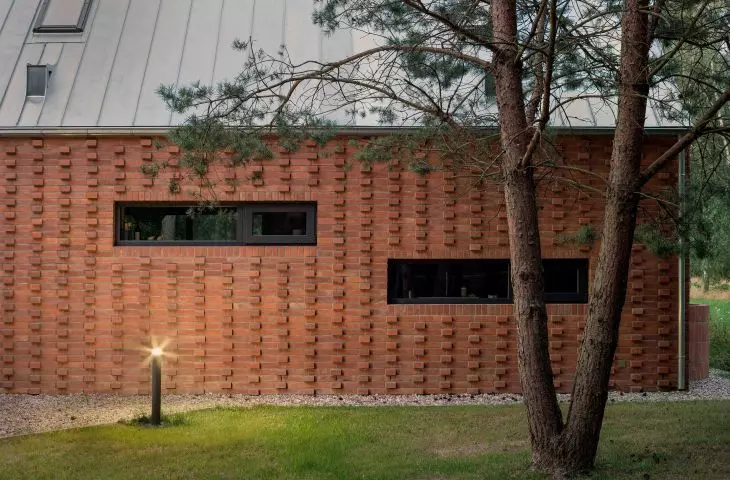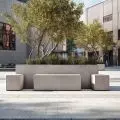Architecture that is designed for loved ones is always the most challenging. When the client-designer side is connected by something more than business, the project takes on new dimensions and meanings. This was the case with the "Forest House" project by Studio Onu, where Kuba Tomaszczyk designed a house for his grandfather.
The architect designed a house for his grandfather.
© Studio Onu
"House of the Forest" is designed to refer to local architectural traditions while having a modern character. The architect, who works daily in Switzerland, tried to appeal to different cultural contexts as well as functional concerns. Composed of two blocks, the house was finished with bricks from a local brickyard. The interior relies on soft, natural color tones, as well as plenty of wood.
The outdoor hearth refers not only to the traditional role of fire, but also helps organize the space around the house
© Studio Onu
Kuba Tomaszczyk talks about the reference to regional architecture, the arrangement of the house with its surroundings, the use of brick and the combination of old and new.
Wiktor Bochenek: How does"House of the Forest" refer to Kashubian architecture?
KubaTomaszczyk: The project refers to Kashubian architecture both literally and figuratively. Here we have a traditional block of a Kashubian cottage, which has been combined with a contemporary version of such aspects as design, functional layout and fire symbolism.
The goal of this project was to refer to history, without recreating it
© Studio Onu
Victor: Thelayout of the house and workshop separated by the hearth is important - what was most important here?
Kuba: Both the house itself and the courtyard sandwiched between the house and the workshop emphasize how important a function fire has traditionally had. In the house, it is a double-sided fireplace that provides comfort and warmth for both the living room and the bedroom. The outdoor hearth, on the other hand, inscribed in a circle between the buildings, opens up to the distant perspective of a clearing bordered by the Pogorzeliczanka River a few hundred meters away. Sitting around the fire, especially in the circle, is about conversation, passing on history and traditions. It's a place to facilitate the transfer of knowledge from generation to generation. A place where a grandparent in the comfort of the fire can spend hours reviving the past and the ghosts of times past.
hearth
© Studio Onu
Wiktor: You decided to use a brick ornament on the facade of the building - is thisalso areference to Kashubian culture?
Kuba: Yes, however, it's my personal reinterpretation of the m ottling and ornamental richness of this culture. Brick ornament existed in Kashubian architecture, but not on this scale. I decided to transfer the intensity of Kashubian embroideries, paintings on ceramics or wood to brick, which gives a more subdued but also intriguing result.
detail of the ornament
© Studio Onu
Wiktor: What is the most difficult thing about combiningtraditional elements with modernity?
Kuba: The biggest challenge is to maintain authenticity and sincerity. The main goal is to continue the culture in its living and usable form, not to create open-air artifacts. I believe that the Forest House does not combine traditional and modern elements, but simply updates traditions to today's needs.
facade detail
© Studio Onu
Wiktor: What causedyou the mostproblems and what gives you the most satisfaction in this realization?
Kuba: A major challenge was the implementation of the project during the pandemic and the supervision of the construction, which was largely done remotely. However, what initially seemed impossible turned into a very efficient system of daily communication with the craftsmen. Based on photos, I was easily able to identify errors such as the misplacement of window openings, switches, or the color of woodwork mixed incorrectly in the paint shop.
interior of the house
© Studio Onu
In addition to creating this special place, for a special person in my life, a great pleasure and satisfaction came from the reception of the project in Poland and around the world, especially the appreciation of it for its honesty and modesty. I'm glad that clients come to me not only because they need an architect, but also because of a similar sensitivity and desire to create their home consciously, with respect for nature, culture and history around them.
Victor: Thank you for the interview.
axonometric projection
© Studio Onu















































